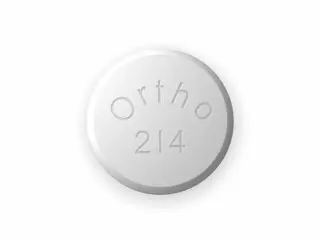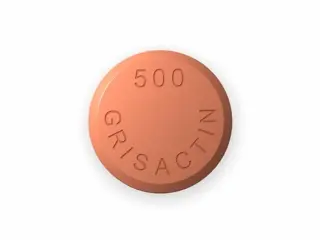Antifungal


Effective antifungal treatments to relieve infections and restore healthy skin, nails, and scalp. Shop trusted products for fast, reliable results and protection against fungi.
Antifungal medications are essential for treating infections caused by fungi. These infections can occur on the skin, nails, scalp, or inside the body. Common fungal infections include athlete’s foot, ringworm, yeast infections, and candidiasis. This category includes several popular drugs like Diflucan, Grifulvin, Grifulvin V, Grisactin, Lamisil, Lotrisone, Nizoral, and Sporanox. Each has unique properties and uses, making them effective in various situations.
Diflucan, also known as fluconazole, is a widely prescribed oral antifungal. It is effective against yeast infections, including vaginal yeast infections and systemic candidiasis. Diflucan works by stopping the growth of fungus. It is usually taken once a day. Many users find it practical because of its simple dosing. Side effects are usually mild and may include nausea or headache. Diflucan is favored for its fast action and broad spectrum.
Grifulvin and Grifulvin V contain griseofulvin as the active ingredient. These pills are mainly used to treat fungal infections of the skin, scalp, and nails. Griseofulvin works by stopping fungi from reproducing. It’s particularly effective against dermatophyte fungi. Treatment duration with Grifulvin can be several weeks or months, depending on the infection severity. Side effects may include headaches, dizziness, or gastrointestinal issues. Patients are advised to avoid alcohol while on this medication to prevent adverse reactions.
Grisactin is another antifungal often used for fungal infections of the skin and nails. It contains amorolfine, which kills fungi and prevents their growth. Grisactin is available as a nail lacquer or topical treatment. Regular application helps clear fungal infections over time. It is less common as an oral medication but effective as a topical solution. Users should apply it consistently, usually once or twice weekly. Side effects are rare but can include redness or irritation at the application site.
Lamisil, with terbinafine as the active ingredient, is popular for treating fungal infections both orally and topically. It is effective against ringworm, athlete’s foot, and nail fungus. Oral Lamisil is typically taken for six weeks or longer if nails are infected. Topical Lamisil is helpful for skin infections and is usually applied once daily. This medicine has a good safety profile. Side effects might include stomach upset or rash. Lamisil acts by stopping the growth of fungus, leading to a permanent cure in many cases.
Lotrisone is a combination antifungal and corticosteroid cream. It contains clotrimazole and betamethasone. This combination helps reduce fungal infection and inflammation simultaneously. Lotrisone is often used for fungal skin infections with severe symptoms like itching and swelling. The corticosteroid part helps calm the skin while clotrimazole kills the fungi. Patients should use it only for short periods because long-term use of corticosteroids can thin the skin. It’s important not to use Lotrisone on fungal infections of the face unless prescribed by a doctor.
Nizoral contains ketoconazole, a broad-spectrum antifungal. It is available in various forms, including tablets, creams, and shampoos. Nizoral shampoo treats dandruff and fungal scalp infections like seborrheic dermatitis. Oral Nizoral is prescribed for more severe fungal infections. Ketoconazole works by disrupting the fungal cell membrane. This action effectively kills many types of fungi. Users should be aware of possible side effects like liver problems with oral use. Topical forms are generally safe and well-tolerated.
Sporanox, or itraconazole, is a strong antifungal medication used for serious fungal infections. It is effective against fungal infections in the lungs, nails, and systemic infections. Sporanox works by stopping fungal enzymes critical for cell membrane formation. This action prevents fungal growth and survival. The medication comes in capsules and oral solution form. Treatment length varies depending on infection type. Some people may experience side effects like nausea, headache, or heart-related issues. Close medical supervision is advised during treatment.
Choosing the right antifungal depends on the type of infection, severity, location, and patient health. For superficial infections, topical treatments like Lotrisone or Nizoral shampoo may suffice. Oral medications such as Diflucan, Grifulvin, Lamisil, or Sporanox are necessary for deeper or widespread infections. Long-term nail fungal infections often require months of therapy with Lamisil or Grisactin. Doctors often decide based on clinical evaluation, fungal culture results, and patient history.
In conclusion, antifungal drugs are diverse and cater to different fungal infections. Diflucan stands out for yeast infections and systemic candidiasis. Grifulvin and Grifulvin V are classic choices for skin and nail fungal infections. Grisactin offers topical treatment options with amorolfine. Lamisil is effective for both skin infections and nail fungus. Lotrisone uniquely combines antifungal and anti-inflammatory properties for irritated skin infections. Nizoral proves versatile with oral and topical formulations for scalp and skin issues. Sporanox treats severe fungal infections and is a critical option for systemic disease. Correct use, dosage, and duration ensure the best results and avoid resistance or recurrence. Always consult a healthcare provider before starting antifungal therapy to get a proper diagnosis and treatment plan.







